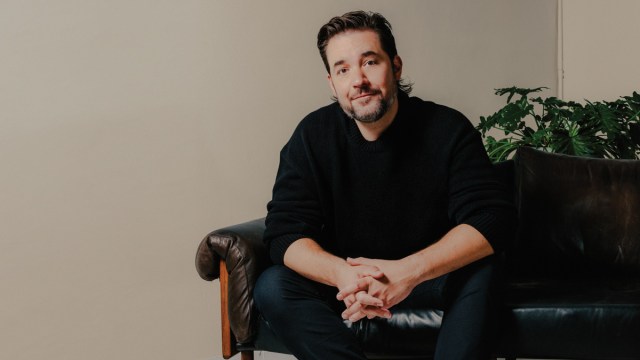Drive business and brand growth with winning media strategies at Mediaweek. Hear from experts at TIME, Peloton, YouTube, Google and more, October 29-30 in New York City. Register.
The first season of the reality television series The Offseason will premiere on X (formerly Twitter) on Oct. 18, a decision that coproducer Alexis Ohanian attributed to the greater creative control the platform offered compared to traditional streamers.
Speaking on-stage at ADWEEK’s Brandweek event in Phoenix, Ariz., Ohanian shared the rationale that led him and coproducer Midge Purcell to make the unorthodox decision to air the six-season series on the social platform.
“Of all the folks we talked to, Linda [Yaccarino, X’s CEO] was the very first to immediately not just get it, but say, ‘We want this thing to be as successful as possible,’” Ohanian told ADWEEK chief content officer Zoe Ruderman.
Yaccarino led advertising sales at NBCUniversal before joining the social platform. Her experience with the Olympics helped her understand the value of the series, according to Ohanian.
Despite the exploding popularity of women’s sports, there are still challenges getting others to invest in the content.
“You could look at this as structural sexism, which I’m sure on some level it is,” Ohanian said. “Or you can look this as an opportunity to say, ‘Great, I now will be able to put more dollars into these founders at day zero, so they can build something that’s true to their vision.’”
Pursuing creative control and scale
The Offseason will follow 11 professional soccer players from the National Women’s Soccer League as they live and train together in a Miami mansion two weeks before the start of the preseason.
Given the stakes of involvement for the players, Ohanian and Purcell, who is a NWSL athlete herself, wanted to ensure they had final creative control over the finished product. This condition led many of the streamers that the duo met with to balk.
“These are professional athletes with high-stakes jobs, so they need to trust that what goes out there is not manufactured,” Ohanian said.
In response, Ohanian and Purce decided to fund the project themselves.
While producing the project gave the duo the creative control they wanted, it also entailed a higher degree of commercial risk. The strategy meant the duo had to invest their money into the product without a guaranteed distribution partner.


